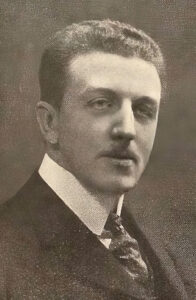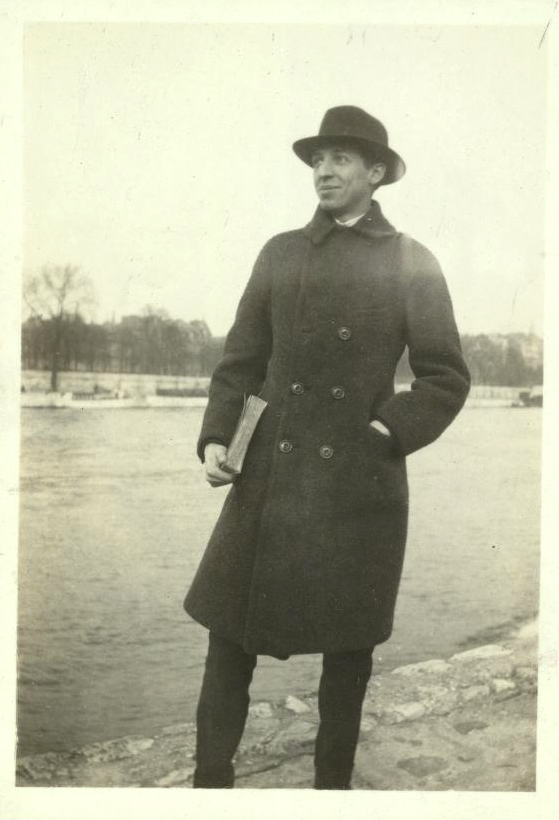1922
1922 News Highlights
- Benito Mussolini leads fascists to power in Italy.
- Deutschland Uber Alles becomes the German national anthem.
- The Russian Civil War ends in Bolshevik victory and the defeat of the last White Army forces in Siberia. The USSR is created.
- The UK, the US, Japan, France and Italy agree to limit the size of their navies in the Washington Naval Treaty.
- James Joyce publishes “Ulysses” in Paris.
- The BBC begins broadcasting in Britain.
- The Lincoln Memorial is dedicated in Washington, DC.
- Eugene O’Neill wins a Pulitzer Prize for his play Anna Christie.
- The American Professional Football Association, formed in 1921, is renamed the National Football League.
- The first Technicolor film, The Toll of the Sea, premieres in New York City. (It doesn’t have a sound track, though.)
- The Detroit News Orchestra becomes the world’s first radio orchestra on WWJ in Detroit, Michigan.
- Ravel’s arrangement of Mussorgsky’s Pictures at an Exhibition premieres in Paris.
- Jean Cocteau’s Antigone opens in Paris, with sets by Pablo Picasso, music by Arthur Honegger, and costumes by Gabrielle Chanel.
- Popular songs: “Toot, Toot, Tootsie (Goo’ Bye!)” by Dan Russo, Ted Fio Rito, Gus Kahn & Ernie Erdman; “Chicago” by Fred Fisher; “I’ll Build a Stairway to Paradise” by B. G. De Sylva & George and Ira Gershwin.
By 1922, things begin to get more exciting for fans of the woodwind quintet. Two of the most famous woodwind quintets from this period are composed just a few weeks apart in 1922, Paul Hindemith’s Kleine Kammermusik, Op. 24, No. 2 and Carl Nielsen’s Quintet, Op. 43. Separate articles about each of these works will be re-posted soon in this blog. Other quintet composers Raymond Charpentier, Carl Futterer, Marcel Labey, and Erwin Lendvai are discussed below.
Charpentier, Raymond (1880-1960)
Quintette (1922), broadcast on radio and apparently unpublished.

A French composer, conductor, critic and publisher, who studied with André Gedalge at the Conservatoire de Paris, Charpentier appears to be little-known outside of France today. He served as an infantry captain in World War I, was seriously wounded in 1914, and was decorated for his service. Especially active as a composer from 1921 to 1943, he wrote chamber music, stage music and for orchestra. He also wrote at least one film score.
Charpentier’s Quintette of 1922 was broadcast by the French radio service RTF and is dedicated to Hélène Jourdan-Morhange (apparently a relative of his wife). I’ve found no record of it being published. (See “Qui est Raymond Charpentier.”) It probably would require a French musicologist to explore the oldest archives of RTF and other radio stations to find this and other quintet scores, if they still exist.
Futterer, Carl (1873-1927)
Futterer’s Bläserquintett in B-flat Major (1922) was reconstructed from a manuscript draft by Joseph Bopp and Jean Barbacanne and was published in Basel by Edition Kneusslin in 1967 and is available in the U.S. by C. F. Peters.
Swiss-born, Futterer was originally an attorney, and later attended the Music Academy of Basel to study composition with Hans Huber. He wrote operas, but kept them secret until he reached the age of 47, and thus began his public musical successes in the 1920s. In 1924 he was appointed as a Professor of Composition at the Mannheim-Ludwigshafen Academy of Music, but apparently only taught there for 2 years before dying in October, 1927.
Futterer also wrote two other wind chamber works: a quartet for oboe, clarinet, horn and bassoon (1921); and an Octet in C Major for clarinet, English horn, bassoon, 2 violins, viola, cello and bass.
Labey, (Jean) Marcel (1875-1968)

Suite Champêtre, Op. 24 (1922) pour quintette à vent was apparently published in Paris by Max Eschig, and is probably now out of print.
Labey’s quintet has a duration of about 21 minutes. It’s 4 movements are: Envoi; Divertissement; Paysage; and Rondeau. It was first performed by members of the Société d’instruments à vent Louis Fleury* in Paris, on April 30, 1923 at the Théâtre des Champs-Élysées. A version for orchestra is numbered Op. 34. See also Marcel Labey’s biography (in French). About the same time he prepared his quintet, Labey also arranged the Suite Champêtre for orchestra.
* The Société d’instruments à vent Louis Fleury is possibly an alternate name for the Société Moderne d’Instruments à Vent which was founded in 1895 by Georges Barrère. When Barrère went to New York in 1905, flutist Louis Fleury took over the directorship and led the group until 1926.
Marcel Labey was born to a family of magistrates and received his own doctorate in law in 1898 before he began serious study in music. He soon became a protégé of Vincent d’Indy. His studies and career were interrupted by World War I, where he served and was wounded twice.
After the war, he taught piano and was one of the under-directors of the Schola Cantorum, and later was co-founder and director of the Ecole César Franck from 1935-1962. He was also secretary of France’s Société nationale de musique, his legal background probably helping him as an administrator.
Labey was a notable conductor in Paris and elsewhere in the country. As a composer he was highly influenced by d’Indy and Franck and, although well-aware of many of the changes of French music in the 20th century, appears not to have been heavily influenced by them. The Suite Champêtre was his only woodwind quintet in a compositional career that concentrated on music for piano, organ, symphonies and a single opera. Labey did, however, write a Suite pour Trio d’Anches, Op. 47, for oboe, clarinet and bassoon. His wife, Charlotte Sohy (1887-1955, a student of Vincent d’Indy, friend of Nadia Boulanger and a cousin of Les Six composer Louis Durey), was also a noted composer, but not for wind chamber music.
Lendvai, Erwin (1882-1949)
Quintett, Op. 23 was published in Leipzig by Simrock in 1922.
Lenvai’s Quintett has three movements: Variiertes Thema; Intermezzo; and Allegro rustico. The score (but not parts) is available for download from the International Music Score Library Project.
Erwin Lendvai was born in Budapest, Hungary, on June 4, 1882. At the National Music Academy of Budapest, he studied with Hans von Koessler (who also taught Kodály, Bartók and Dohnányi) and later with Giacomo Puccini in Milan. He moved to Germany in 1906. He taught composition at the Klindworth-Scharwenka Conservatory in Berlin and, later, choral singing at the Volksmusikschule in Hamburg. It appears that his woodwind quintet was a product of his activities in Berlin. In 1933 Lendvai emigrated to England to escape the Nazi regime. After the war he headed the Györ Conservatory of Music back in Hungary. He must have also continued activities in England, because he died March 21, 1949 in Epsom, Surrey.
Lendvai’s Op. 23 appears to be his only work for woodwind quintet or, for that matter, any wind group. The only recording listed in WorldCat is a 1927 recording on the Spanish Polydor label. If the parts are no longer available from Simrock, there are numerous copies available in libraries around the United States and elsewhere.
Credits
The very distinguished photo of Raymond Charpentier is from the Bruit Blanc post, “Qui est Raymond Charpentier? (link above).
The image of Marcel Labey is from Wikipedia.
“Cover” photo is of Aaron Copland in Paris during the 1920s. Courtesy of the Library of Congress (loc.gov).
Copyright © 2024 by Andrew Brandt

